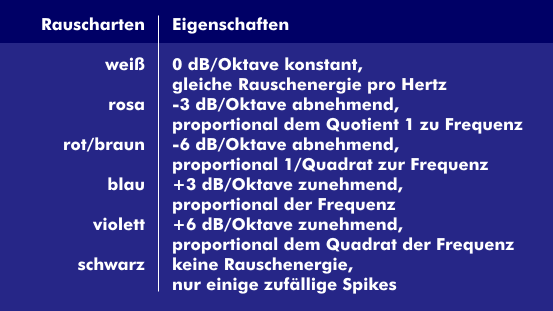pink noise
Noise is statistical level and phase fluctuations. In engineering, one influences the distribution of noise with respect to the frequency distribution.
While white noise has a constant spectral energy over all frequency ranges, pink noise has an energy density that decreases with frequency and is inversely proportional to frequency (1/f) at 3 dB per octave. Relative to an octave, the noise energy is constant, thus pink noise decreases with higher frequencies. Therefore, pink noise is also referred to as 1/f noise.
This means that each octave always has the same energy density. For example, the frequency range from 1 kHz to 2 kHz has the same noise density as the frequency range from 2 kHz to 4 kHz or that from 5.5 kHz to 11 kHz.
Thus, the energy density drops by 3 dB or by a factor of 0.7 when the frequency is doubled. Pink noise can be generated by passing white noise through a filter with a slope of 3 dB/octave.
In acoustics, pink noise is used for acoustic backgrounds and also serves as a modulation signal in synthesizers. In addition, it is used in acoustic measurement technology, for example in the measurement of critical frequency bands.

